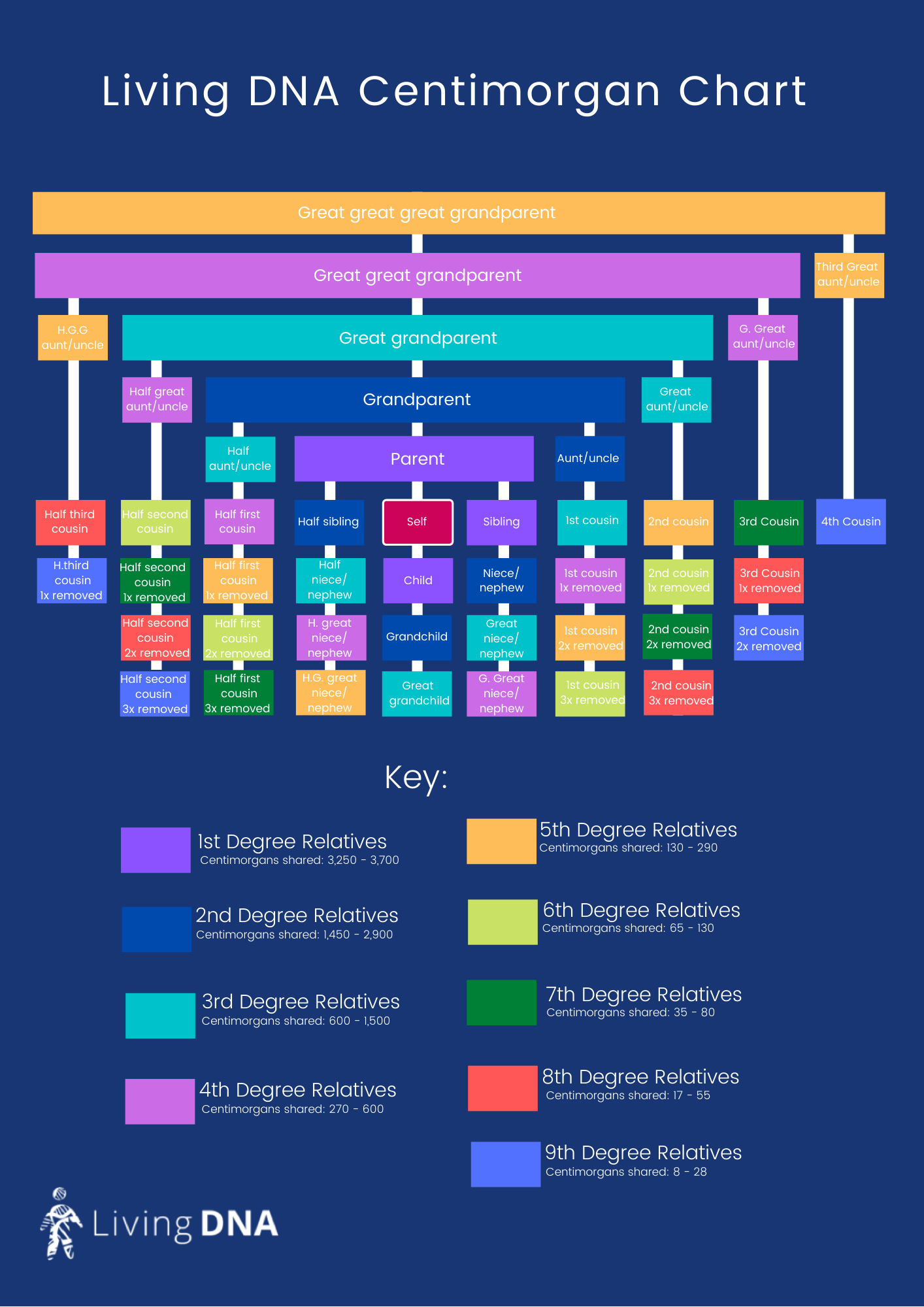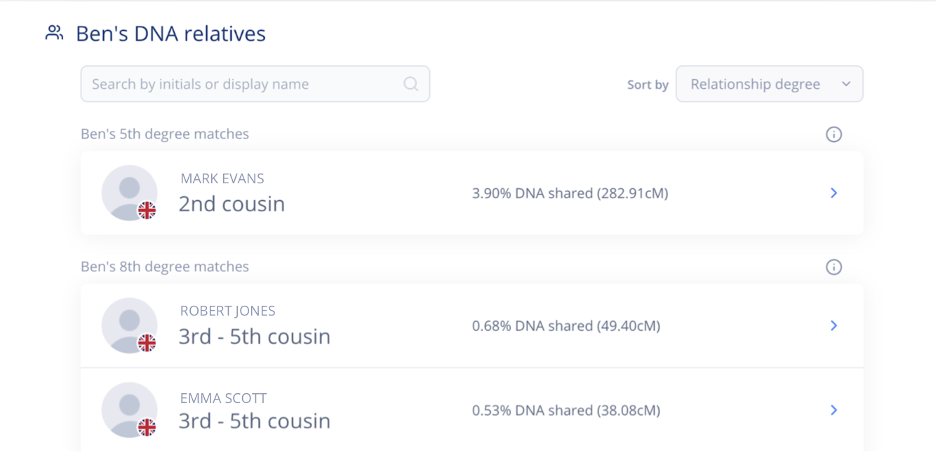What are centimorgans?
Most people carry out research and tests into their DNA to discover their roots, ancestors and origin. But what happens when the information you receive doesn’t quite match up to what you once thought? Particularly if the internet contradicts itself?
One of the most common causes of an anomaly in results comes from a measuring unit that forms part of your DNA called a centimorgan. Understanding how these work, and viewing them in a chart format can help you make sense of your DNA results. Centimorgans are a measure of how long a piece of DNA is, and since you inherit around half of your DNA from each parent, the typical person will share around 3700cM with each biological parent.
What exactly is a centimorgan?
Scientifically speaking, Centimorgans are a unit of genetic measurement. Experts use this information to help describe how much DNA you share with your relatives. The amount of centimorgans you share with somebody determines how closely related you are. Centimorgans are less of a physical measurement that we use in daily life such as centimetres and inches, but more of a measurement based upon the number of DNA meiosis events; a fancy way to say family tree branches separating two related people.
How to make sense of the numbers
Using the information on the number of centimorgans you have, DNA tests determine how you and your DNA matches are related. Centimorgan charts give an estimated guide as to what certain numbers of shared centimorgans mean. From here you can begin making connections to possible relatives and shared ancestors, and the chart will help to guide you on which possible relationships to focus on in your search.
To use the centimorgan chart, take the total amount of DNA you share with a match, and use the chart to narrow down the person you’re most likely to share DNA with.
Living DNA's DNA Relationships/Centimorgan Chart

What is a DNA matching segment?
By definition, a DNA matching segment is a physical region of a chromosome that is the same between two people. This would indicate that they have both inherited this part of their genomes from a common ancestor.
What does each DNA segment represent?
The majority of DNA segments that you share with your DNA match represent the parts of your genome that you have inherited from one or more common ancestors. You can inherit multiple DNA segments from the same recent ancestor, or or only a small amount of a segment from a distant one. People who are only distantly related will share a very small proportion of their DNA (sometimes even just one tiny segment!), whereas those that are closely related will share more larger DNA segments.
Is the size of DNA segments important?
Yes! When it comes to DNA segments, typically, the longer the DNA matching segment that you share, the closer the relationship. The opposite is true for more distant relationships, the smaller the segment, the more distant the relationship.
How and why do DNA segments get smaller?
The reason you share smaller DNA segments with your distant relatives than with your closer family members is simply because of the way that DNA is inherited. Each person inherits 50% of their DNA from each of their parents - this 50% is a mixture, or recombination, of their parents total DNA. Because of recombination, over time the descendants of these couples will share less and less of the same DNA along the different lines/branches of the family as the family tree expands.
Discover your DNA Relatives with Living DNA
Living DNA’s ancestry test includes “Family Matching” with a matching range to the 9th degree (4th Cousin and greater) including the percentage of DNA shared and centimorgan measurement.
If you have not opted into family networks, read our guide on how to opt in. It can take up to 2 weeks for matches to appear once you have opted in.

